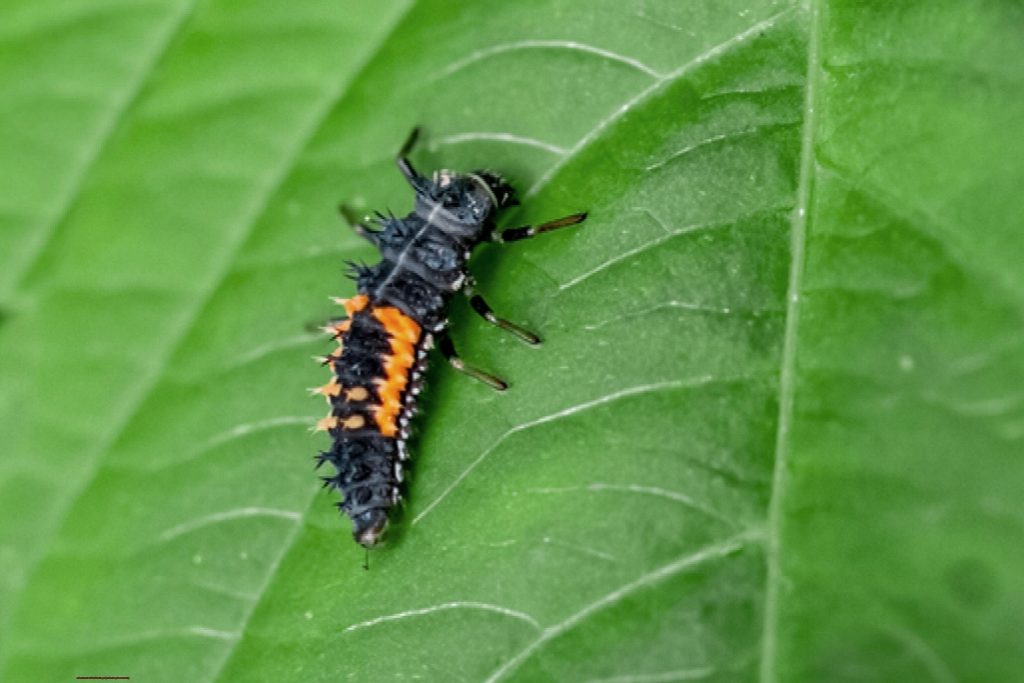Did you know that a single female cockroach can produce up to 300 to 400 offspring in her lifetime? Now imagine what that means in your home. Dealing with cockroach nests isn’t just about a single pesky bug; it’s about stopping a potential infestation at its source. Welcome to our blog post on naturally eliminating cockroach nests—a challenge that many homeowners face but often struggle to resolve effectively.
In this post, we’re diving deep into the world of natural and home-friendly methods to tackle this problem. We understand that the use of harsh chemicals isn’t everyone’s first choice, especially in homes with pets, children, or sensitive individuals. That’s why our focus is on safer, yet efficient, approaches to dealing with these resilient pests.
So, how to get rid of cockroach nest naturally?
Here are some natural ways to get rid of cockroaches:
- Baking soda: Put baking soda on food, like onions, and leave it overnight near the place where you saw roaches. A roach that eats baking soda will burst because the baking soda will spread inside the roach.
- Borax: Before you put the homemade poison in places where you’ve seen them, mix the borax and sugar in a 3:1 ratio. When roaches are a problem, borax can help because it slowly dries out the bugs’ shells, which hurts their gut systems and kills them.
- Coffee grounds: You can put a jar of water with coffee grounds in it where you often see bugs or against a wall. These bugs will come out of the dark areas of your house when they smell coffee grounds.
- Boric acid: A naturally produced mineral that stops cockroaches’ nerve and stomach systems and kills them quickly.
- Diatomaceous earth: Spread diatomaceous earth in places where you know bugs like to hang out. Diatomaceous earth is a natural substance that can dry out cockroaches’ shells and kill them.
- Essential oils: Mix peppermint or lemongrass essential oil with a bit of water and spray the mixture anywhere you’ve seen roaches. This effective, affordable and non-toxic solution does not kill roaches.
Let’s embark on this journey together, turning the tide against cockroaches using nature’s own arsenal.
Table of Contents
Need Product Recommendations?
To effectively rid your house of cockroach nests using natural products, I recommend a strategic mix of solutions that target not only the adult roaches but their eggs and hiding spots too.
| Product | Application Method | Key Benefits |
| Baking Soda and Sugar Mix | Scatter in shallow bowls near infested areas. | Attracts roaches with sugar; baking soda kills them. |
| Borax Powder and Sugar | Sprinkle in corners or dissolve in water and spray. | Kills roaches; sugar lures them in. |
| Diatomaceous Earth | Spread in areas where roaches are seen crawling. | Dehydrates and kills roaches upon contact. |
| Essential Oil Spray (Peppermint, Eucalyptus, etc.) | Mix with water and spray in hiding spots. | Natural repellent; disrupts roach sensory navigation. |
| Boric Acid | Sprinkle around the house, focusing on entry points. | Potent insecticide; effective against roaches and eggs. |
| Neem Oil Spray | Mix with water and apply directly to infested areas. | Acts as an insecticide; disrupts roach life cycle. |
| Catnip Tea Spray | Boil catnip, cool, and spray around the house. | Contains nepetalactone, a natural roach repellent. |
| Vinegar Solution | Mix white vinegar with water; spray in affected areas. | Cleans surfaces; may deter roaches with its smell. |
Implementing these strategies requires diligence. Regular application and maintaining cleanliness are crucial for success. Ensure food is stored properly, trash is taken out regularly, and any water leaks are repaired to remove sources of attraction for cockroaches.
Sealing cracks and crevices around your home will also prevent new roaches from entering.
What Does a Cockroach Nest Look Like?
Absolutely, let’s dive straight into the heart of what a cockroach nest brings to the eerie table of pests. Unlike the nests or hives of other insects, which might flaunt their architecture with intricate designs or visible structures, a cockroach nest is an altogether different kettle of fish.
It’s more about the vibes – if you catch my drift. A cockroach nest doesn’t have a physical structure you can point at and say, “Eureka, that’s it.” Instead, it’s a gathering spot, a rather uninviting party where the guests are bound together by some invisible yet potent social glue: aggregation pheromones.
Physical Appearance and Uniqueness
| Feature | Description | Comparison |
| Structure | Non-physical, defined by aggregation pheromones | Differs from bees’ hives or ants’ nests which are visible structures |
| Contents | Brown, pill-shaped egg cases, molting remnants, distinctive droppings, and a specific odor | Contrasts with the more organized and compartmentalized structure in ant or bee nests |
| Location | Hidden spots like basements, inside appliances, cluttered areas | Other insects may prefer outdoors or in-ground locations for nests |
Roach nests thrive on chaos – think less ‘architectural marvel’ and more ‘the aftermath of a wild night’.
You’re looking for signs rather than sights: those brown, pill-shaped egg cases that look like they’ve seen better days; remnants of molting that scream teenage rebellion; droppings that are an interior decorator’s nightmare; and an odor that’s decidedly anti-candle material.
These nests can cram themselves into the nooks and crannies of your home – from the shadowy depths of your basement to the cozy confines behind your fridge.
Where Do Roaches Live?
Cockroach nests, or as we might more accurately say, cockroach colonies, favour spots in our homes that offer them the trifecta of survival: darkness, moisture, and easy access to food.
If you’re on a mission to evict these unwelcome guests, let’s shine a light on their favourite hideouts.
Kitchen Cabinets and Appliances:
The kitchen is a buffet for cockroaches, with crumbs and spills aplenty. They’ll make themselves at home behind refrigerators, under sinks, and inside your cabinets.
Bathroom Nooks and Crannies:
The bathroom offers a water park experience for these pests. Look for them in sink cabinets, under bathtubs, and around toilet areas.
Cluttered Spaces and Storage Areas:
Boxes of memories and seldom-used items can become luxury apartments for roaches. Basements, attics, and closets are prime real estate.

Here’s a peek into their hidey-holes:
| Location | Why They Love It | What to Look For |
| Kitchen Appliances | Warmth and food scraps | Molted skins, droppings |
| Bathroom Cabinets | Moisture heaven | Egg cases, musty odour |
| Clutter and Storage Boxes | Dark, undisturbed spaces | Live roaches, droppings |
Spotting these signs early and taking swift action can save you from a larger infestation. Remember, where there’s one roach, there’s often a hidden choir ready to sing.
How to Find a Roach Nest
Finding a roach nest in your house is akin to discovering the heart of darkness in your own home. Knowing where to look is the first step in tearing it out. Here’s where these critters love to set up shop:
| Location | Description | Why They Love It |
| Kitchen Appliances | Behind fridges, stoves, and dishwashers | Warmth, moisture, and crumbs make these spots roach paradises. |
| Cabinets and Furniture | Inside cupboards, under sinks, and within furniture crevices | Dark, often undisturbed spaces perfect for laying low. |
| Bathrooms | Around sinks, toilets, and bathtubs | They can’t resist the constant humidity. |
| Utility Areas | In and around boilers, heaters, and laundry rooms | Mix warmth with a bit of moisture, and you’ve got a roach hotspot. |
| Cracks and Crevices | Wall cracks, loose baseboards, around windows and door frames | Easy access points for roaches to sneak through and set up camp. |
| Attics and Basements | In boxes, amongst clutter, or in insulation material | Less frequented by humans, making them ideal for undisturbed breeding. |
| Floor Drains | In unused drains or seldom-cleaned floor traps | A direct route from sewers or outside, bringing new recruits to the nest. |
Roaches are survivors, evolved over millennia into the pests we know today. They’re drawn to our homes like moths to a flame – for food, water, and shelter. Their nests aren’t the twiggy constructs of birds but rather hidden enclaves where they can multiply in peace.
To root them out, you’ll need patience, vigilance, and sometimes a strong stomach. But knowing these common hideouts gives you the upper hand in this unwelcome game of hide-and-seek.
How to Get Rid of a Cockroach Nest
To naturally eliminate a cockroach nest in your home, consider these effective methods:
| Method | Instructions | Why It Works |
| Boric Acid and Sugar Mix | Mix boric acid with sugar in equal parts. Sprinkle the mix near suspected nest areas. | The sugar lures the cockroaches while the boric acid dehydrates them upon ingestion. |
| Diatomaceous Earth | Spread a fine layer of diatomaceous earth around crevices, behind appliances, or where roach activity is common. | Its sharp microscopic edges slice through the roaches’ exoskeletons, causing dehydration. |
| Essential Oils Spray | Mix 10-15 drops of peppermint oil (or other repellant essential oils) with water in a spray bottle. Apply in affected areas. | The potent scent of essential oils like peppermint repels cockroaches naturally. |
| Coffee Grounds | Place coffee grounds in shallow dishes near suspected nest sites. | Cockroaches dislike the strong smell, which acts as a natural repellent. |
| Baking Soda and Sugar Bait | Mix equal parts baking soda and sugar. Leave the mixture near the nest or areas of activity. | The sugar attracts roaches, while the baking soda reacts inside them, leading to elimination. |
| Cleanliness and Maintenance | Ensure your home is free of food debris, seal cracks, fix leaks, and declutter regularly. | Removing food sources and access points discourages cockroaches from nesting in your home. |
| Vinegar and Water Solution | Mix equal parts of white vinegar and water in a spray bottle. Apply liberally in affected spots. | The scent of vinegar acts as a deterrent for cockroaches without harming humans or pets. |
| Catnip Spray | Boil catnip leaves in water, let cool, then strain into a spray bottle. Spray around your home’s perimeters and entry points. | Catnip contains nepetalactone, which is a natural cockroach repellent. |
These methods are not only natural and safe for use around children and pets but also environmentally friendly.
Conclusion
Using nature’s own pest control methods to get rid of cockroach groups is not only smart, but also safe for you and the environment. You now know how to fight these tough pests right where they come from after reading this in-depth look at natural cockroach control methods. Every piece of information is a step toward a roach-free home, from a deep knowledge of how cockroaches act and where they like to hide to a wide range of natural remedies and methods.
These natural treatments, which include the smart use of boric acid, diatomaceous earth, essential oils, and other common home items, show a dedication to being effective without sacrificing safety. Regular use, along with precautions like keeping things clean and closing off entry spots, makes for a strong defense against future outbreaks. This two-pronged method not only bothers the people who are already there, but it also keeps unwanted guests out of your home.
Going along with what Andrew Martin and Dr. Helene Steenkamp have said, the message is clear: to beat cockroaches, you need to know your enemy and use natural methods. Now that you know these things, your plan to take back your home is not just a chance; it’s a reality.





